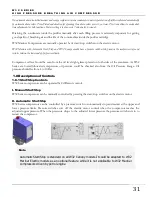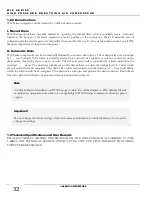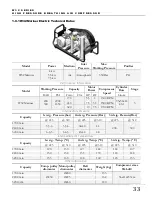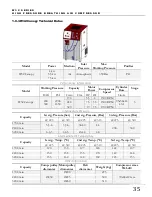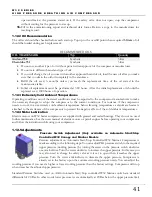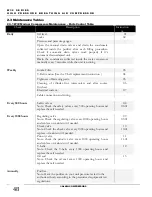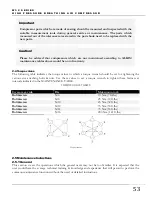
W 3 2 S E R I E S
H I G H P R E S S U R E B R E A T H I N G A I R C O M P R E S S O R
©ALKIN COMPRESSORS
38
installed in full compliance with all Federal, State and local codes, standards and regulations. If required, consult the
manufacturer for further information.
1.10.4 Electrical Controls
Important
Although all electrical instructions addressed to the reader directly, the actual
inspection, wiring, installation, maintenance, repair, etc. must be carried out by licensed
and certified electricians only.
Make electrical connections to the compressor in accordance with the wiring diagrams and in full compliance
with all applicable federal, state and local standards, codes and regulations, including those dealing with the
earthing requirements. A few electrical checks should be made to insure that the first start up will be trouble
free. Make the following checks before attempting any start up:
1.
Check line voltage. Verify that the compressor motor corresponds with these specifications.
2.
Check starter and max. load for conformity with the motor power and current data.
3.
Check tightness of all electrical connections including those in the electrical panel of the compressor.
4.
At start up, check the direction of rotation to insure that flywheel rotates to the direction of the arrow
on it.
5.
Although a few minutes of operation in the wrong direction of rotation will not seriously damage the
compressor, it will cause serious damages on the compressor if it runs in this position for a long time
as the cooling air flow will be reversed, the compressor cylinders can not be cooled down and the oil
pump will not pump oil, the compressors will run without lubrication
1.10.5 Wiring
It is important to select the right size and capacity wire and fuses. Install an isolation switch with magnetic
protection and a capacity of three times bigger than the motor full load current on the wall.
1.10.6 Sheave and V-Belt Alignment
Check the V-
belt tension. Proper tension should be adjusted to give about 12 mm. (1/2’’) deflection with a 1
kg.
(2 pounds) weight applied at the center of each belt check the condition of the belts periodically (see
the maintenance table for details)
Note








